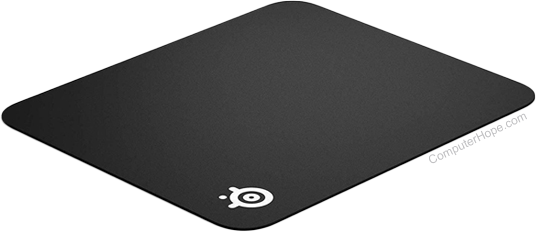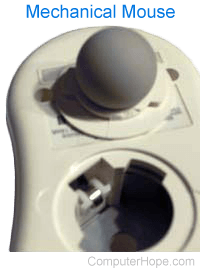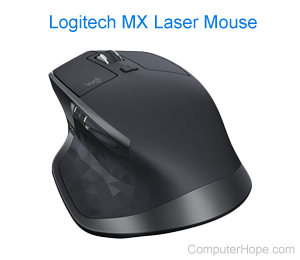Do I need a mouse pad?
The short answer to this question is: not usually. The detailed answer comes down to what type of mouse you're using and personal preferences. The following sections address which types of mice need a mouse pad, and why you may still want to use one even if not required.

Which types of mice require a mouse pad?

Mechanical mouse
The early version of the mouse, called a mechanical mouse, didn't use light to measure movement like its optical and laser counterparts. Instead, they housed a hard rubber ball that would roll as the mouse moved, turning small wheels inside the device. This motion sent signals to a computer, where they were used to move the mouse cursor on the screen correspondingly. Because input was gathered from physical motion, a mouse pad was quite helpful for providing a surface for the rubber ball to grip and allow for more accurate ball movement.
Bottom line: With mechanical mice, a mouse pad is not an absolute necessity, but it does greatly improve mouse performance and accuracy.

Optical and laser mice
The current versions of computer mice use a light source to measure and translate distance. The first, called an optical mouse, utilizes an infrared LED (light-emitting diode), and the other, called a laser mouse, utilizes a concentrated light beam. Both technologies essentially bounce light from the surface, and then capture and map the reflection data. Once the mouse receives input, it's recorded by a CMOS sensor and sent to the computer for translation into cursor movement.
Optical mice can struggle with highly-reflective and glass surfaces due to their low level of penetration. However, a laser mouse doesn't have this issue and can work on any surface, including glass.
Bottom line: Optical mice need a mouse pad if your desk or table is reflective or glass, but laser mice do not.
What are the benefits of using a mouse pad?
Whether or not you need a mouse pad, they do offer a few extra benefits.
- Mouse performance - Mouse pads are made from materials that facilitate consistent tracking, with smooth and tactile device movement across their surface. Some even help with wireless mouse battery life.
- Comfort and convenience - Mouse pads can improve comfort by giving your hand a cushioned surface. Furthermore, desk-wide versions (mouse mats) keep your keyboard in place.
- Surface protection - After a while, moving your mouse and hand back and forth over your desk can scratch or wear its surface. Using a mouse pad creates a protective layer for your furniture.
